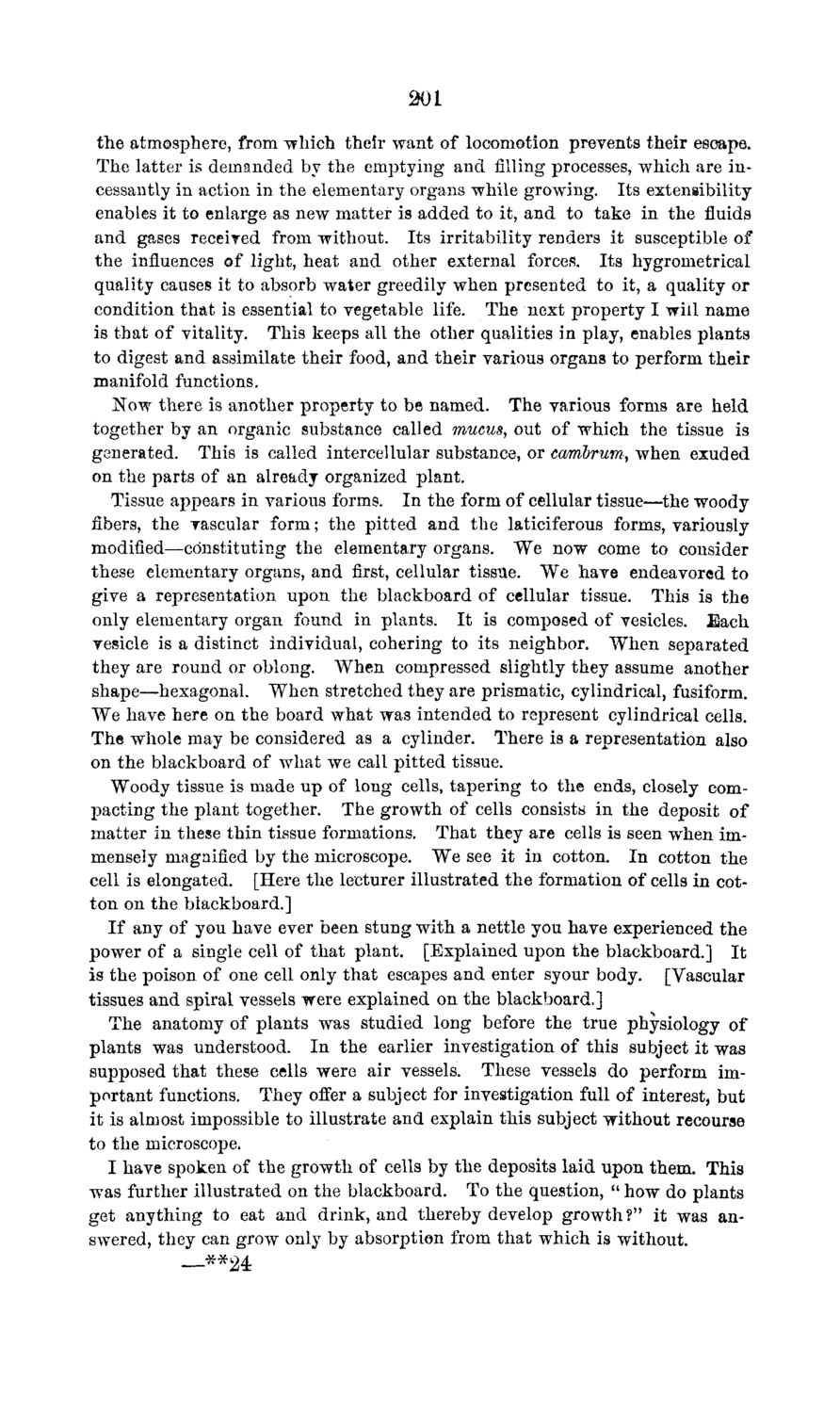| |
| |
Caption: Board of Trustees Minutes - 1869
This is a reduced-resolution page image for fast online browsing.

EXTRACTED TEXT FROM PAGE:
201 the atmosphere, from which their want of locomotion prevents their escape. The latter is demanded by the emptying and filling processes, which are incessantly in action in the elementary organs while growing. Its extensibility enables it to enlarge as new matter is added to it, and to take in the fluids and gases received from without. Its irritability renders it susceptible of the influences of light, heat and other external forces. Its hygrometrical quality causes it to absorb water greedily when presented to it, a quality or condition that is essential to vegetable life. The next property I will name is that of vitality. This keeps all the other qualities in play, enables plants to digest and assimilate their food, and their various organs to perform their manifold functions. Now there is another property to be named. The various forms are held together by an organic substance called mucus, out of which the tissue is generated. This is called intercellular substance, or carribrum, when exuded on the parts of an already organized plant. Tissue appears in various forms. In the form of cellular tissue—the woody fibers, the vascular form; the pitted and the laticiferous forms, variously modified—constituting the elementary organs. We now come to consider these elementary organs, and first, cellular tissue. We have endeavored to give a representation upon the blackboard of cellular tissue. This is the only elementary organ found in plants. It is composed of vesicles. Dach vesicle is a distinct individual, cohering to its neighbor. When separated they are round or oblong. When compressed slightly they assume another shape—hexagonal. When stretched they are prismatic, cylindrical, fusiform. We have here on the board what was intended to represent cylindrical cells. The whole may be considered as a cylinder. There is a representation also on the blackboard of what we call pitted tissue. Woody tissue is made up of long cells, tapering to the ends, closely compacting the plant together. The growth of cells consists in the deposit of matter in these thin tissue formations. That they are cells is seen when immensely magnified by the microscope. We see it in cotton. In cotton the cell is elongated. [Here the lecturer illustrated the formation of cells in cotton on the blackboard.] If any of you have ever been stung with a nettle you have experienced the power of a single cell of that plant. [Explained upon the blackboard.] It is the poison of one cell only that escapes and enter syour body. [Vascular tissues and spiral vessels were explained on the blackboard.] The anatomy of plants was studied long before the true physiology of plants was understood. In the earlier investigation of this subject it was supposed that these cells were air vessels. These vessels do perform important functions. They offer a subject for investigation full of interest, but it is almost impossible to illustrate and explain this subject without recourse to the microscope. I have spoken of the growth of cells by the deposits laid upon them. This was further illustrated on the blackboard. To the question, " how do plants get anything to eat and drink, and thereby develop growth?" it was answered, they can grow only by absorption from that which is without. —**24
| |